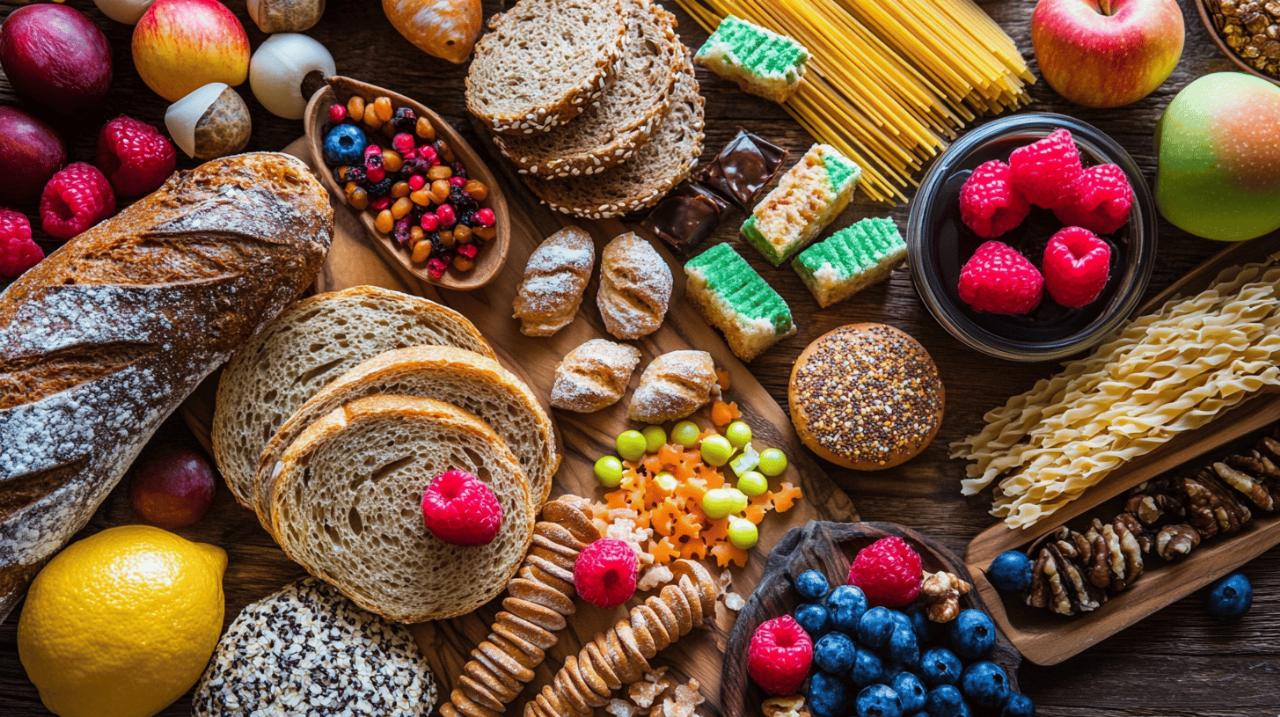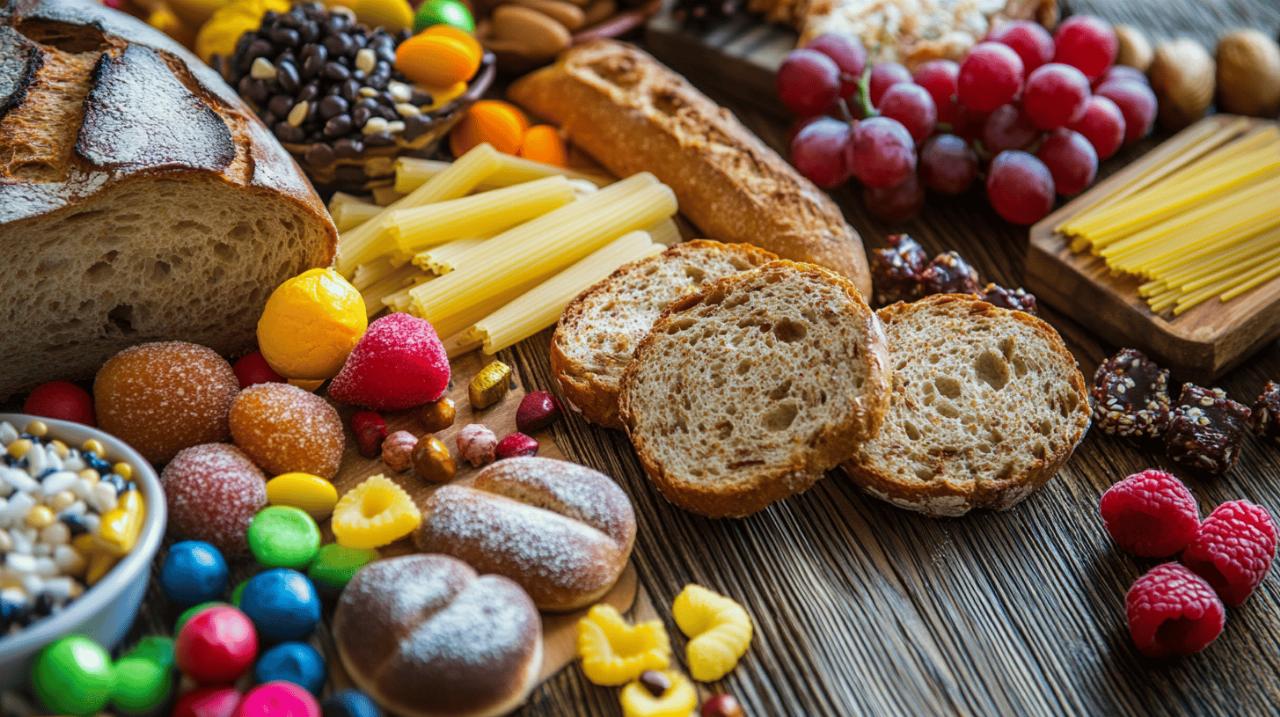The ketogenic diet has become increasingly popular for those looking to shed pounds and improve their health through a radical shift in eating patterns. At its core, this diet flips traditional nutrition advice on its head by drastically reducing carbohydrates and replacing them with fats. But why exactly are grains and starches the first items to be crossed off your shopping list when embarking on this high-fat, low-carb journey? Let's explore why these foods top the list of forbidden items during a ketogenic regimen.
Understanding the ketogenic diet basics
The ketogenic diet is a distinctive nutritional approach that fundamentally transforms how your body produces energy. Rather than relying on glucose from carbohydrates, your system switches to burning fat as its primary fuel source. This metabolic state, known as ketosis, is the cornerstone of weight loss on this diet and has been used therapeutically since 1921 for various health conditions before gaining mainstream popularity for weight management.
How ketosis works in your body
When you drastically reduce your carbohydrate intake, your body quickly depletes its glucose reserves. Without sufficient carbs to convert to energy, your liver begins breaking down stored fat into molecules called ketones, which serve as an alternative fuel source. This fat-burning state can lead to significant weight loss as your body effectively becomes a fat-burning machine. The shift to ketosis doesn't happen immediately though—it typically takes several days of strict carbohydrate restriction before your body fully adapts to using ketones for energy.
The daily carbohydrate limit for effective results
For most people to achieve and maintain ketosis, carbohydrate intake must be limited to approximately 20-50 grams per day—a stark contrast to the Swiss Society of Nutrition's recommendation that 50% of daily energy should come from carbohydrates. On a ketogenic diet, carbs typically make up only 5-10% of daily calories, while fats constitute a whopping 70-80%, and protein accounts for 10-20%. For perspective, on a 2000-calorie diet, this translates to consuming fewer than 50 grams of carbohydrates daily, which is less than the amount in a single baguette.
Grains: why they're banned on keto
Grains form the foundation of many traditional diets worldwide, but they present a significant obstacle for those pursuing ketosis. These starchy staples are packed with carbohydrates that quickly convert to glucose in your bloodstream, making them incompatible with the low-carb requirements of a ketogenic lifestyle. Even whole grains, despite their fibre content and nutritional benefits, contain too many carbs to fit into the strict ketogenic framework.
The carbohydrate content in common grains
The carbohydrate density in grain products is truly eye-opening when examined through the lens of ketogenic restrictions. A standard baguette contains about 58.3g of carbs per 100g, which exceeds an entire day's carbohydrate allowance on keto. Other common grain products are similarly problematic—cooked white rice contains 31.8g of carbs per 100g, while cooked pasta has 25g. Breakfast cereals are among the most carb-heavy offenders at approximately 79.2g per 100g, and cereal bars aren't far behind at 79.5g. Even quinoa, often celebrated as a healthy ancient grain, contains 27.9g of carbohydrates per 100g when cooked—still too high for keto practitioners aiming to stay under 50g total daily carbs.
Grain-Based Foods to Avoid for Maintaining Ketosis
Beyond the obvious bread and pasta, numerous grain-based foods can subtly sabotage ketosis if not carefully avoided. Biscuits, with approximately 80g of carbs per 100g, are definite no-gos. Breakfast foods like pancakes, waffles, and most commercial granolas contain significant amounts of grain-derived carbohydrates. Even seemingly innocent items like breadcrumbs used as coating or thickeners in sauces can introduce unwanted carbs into your diet. Surprisingly, many processed foods contain hidden grain-based ingredients that can accumulate throughout the day, gradually pushing you out of ketosis without realising it.
Starchy Vegetables and Their Impact on Ketosis
 While vegetables are generally considered healthy, not all varieties are suitable for a ketogenic diet. Starchy vegetables, particularly those that grow underground, can contain carbohydrate levels comparable to some grains. These vegetables convert readily to glucose in the body, potentially disrupting ketosis and stalling weight loss progress. The restriction of these otherwise nutritious foods highlights one of the more challenging aspects of maintaining a ketogenic lifestyle long-term.
While vegetables are generally considered healthy, not all varieties are suitable for a ketogenic diet. Starchy vegetables, particularly those that grow underground, can contain carbohydrate levels comparable to some grains. These vegetables convert readily to glucose in the body, potentially disrupting ketosis and stalling weight loss progress. The restriction of these otherwise nutritious foods highlights one of the more challenging aspects of maintaining a ketogenic lifestyle long-term.
Root vegetables and their hidden carb content
Root vegetables like potatoes, sweet potatoes, and carrots have evolved to store energy in the form of starch, making them particularly carb-dense. A standard potato can contain upwards of 20g of carbs—nearly half the daily allowance for someone following a strict ketogenic diet. Carrots, while lower in carbs than potatoes, still contain enough sugar to warrant caution, especially when consumed in larger quantities. Even parsnips and beetroot, despite their nutritional benefits, pack too many carbohydrates to fit comfortably within ketogenic parameters. This restriction can be particularly challenging during colder months when hearty root vegetables traditionally feature prominently in warming dishes.
Keto-friendly vegetable alternatives
Fortunately, many non-starchy vegetables can be enjoyed liberally on a ketogenic diet, providing essential nutrients without compromising ketosis. Leafy greens like spinach contain only 3.6g of carbs per 100g, making them an excellent base for salads and cooked dishes. Cucumbers are even lower at just 1.6g, while celery contains a mere 1.2g per 100g. Other keto-friendly options include zucchini at 2.3g, asparagus at 2.03g, and radishes at 1.8g. Tomatoes, despite being fruits botanically, contain only 2.8g of carbs per 100g and can be included in moderation. These vegetables not only help maintain ketosis but also provide vital fibre, vitamins, and minerals that support overall health while on a restricted diet.
Building a proper ketogenic meal plan
Creating a sustainable ketogenic diet involves more than simply eliminating carbs—it requires thoughtful meal planning to ensure nutritional adequacy while maintaining the strict macronutrient ratios necessary for ketosis. A well-formulated ketogenic meal plan focuses on high-quality fats, moderate protein, and carefully selected low-carbohydrate vegetables. This approach helps mitigate some of the nutritional concerns associated with very low-carb diets while supporting long-term adherence.
Healthy Fats and Proteins to Prioritise
Since fats comprise 70-80% of calories on a ketogenic diet, choosing the right types becomes crucial for both health and satisfaction. Nutrient-dense options include olive oil, avocados, nuts, and seeds, which provide essential fatty acids along with vitamins and minerals. For protein sources, which should constitute 10-20% of daily calories, focus on eggs, fatty fish like salmon, and various meats. Dairy products like cheese can be included, though they should be consumed mindfully due to their protein content, which can potentially convert to glucose if eaten in excess. When selecting animal products, quality matters—grass-fed and organic options typically offer better fatty acid profiles and fewer contaminants.
Monitoring portions for optimal weight management
Despite its reputation as a weight loss diet, ketogenic eating doesn't automatically guarantee fat loss without attention to overall food intake. Even though many find their appetite naturally decreases in ketosis, portion awareness remains important. Caloric dense foods like nuts, cheese, and fatty cuts of meat can contribute to weight gain if consumed without restraint. A common mistake is overemphasising fat consumption without considering total energy needs. Tracking food intake initially can help develop awareness of appropriate portions while ensuring carbohydrate limits aren't exceeded. As your body adapts to fat-burning, many find they naturally settle into an appropriate intake pattern that supports their weight management goals without rigorous tracking.




